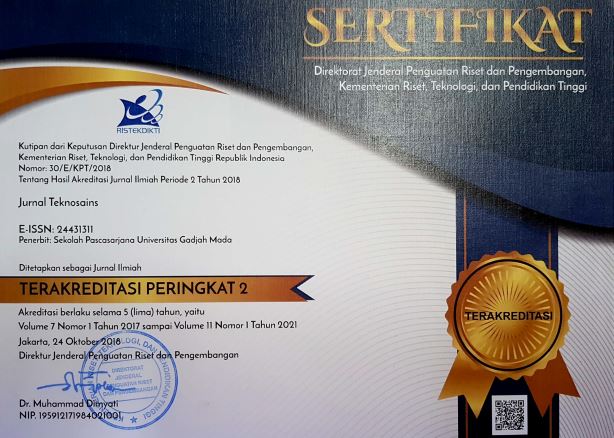TEGANGAN RESIDU KEPING ARESTER SEBAGAI FUNGSI DARI CACAH KEPING ARESTER
Devia Eka Yunida dan T. Haryono(1*)
(1) Balai Besar Pengembangan Latihan Kerja Dalam Negeri (BBPLKDN) Kementerian Tenaga Kerja dan Transmigrasi Bandung-Jawa Barat
(*) Corresponding Author
Abstract
Indonesia is a tropical area with a high intensity of repeating lightning strikes. The voltage is produced by lightning by increasing the presence of sensitive loads. Therefore, lightning can easily worsen the quality of consumer power, even if the generated voltage is relatively low. Lightning strikes can cause excessive voltage along the power lines. Its propagation can cause a voltage surge on low voltage systems, which can damage the equipment. Maintenance and protection against lightning strikes are necessary for the prevention of such damage. Arrester is a device that is intensively used nowadays by the general public to protect equipments from lightning strikes. It is used to protect the system from the danger of lightning by flowing current into the ground and leaving a certain resistance value, so that the system does not experience a surge voltage.This research was conducted through laboratory-scale testings using several major equipments, such as a high voltage generator, an impulse voltage generator, and an oscilloscope. Modifications of the tests were done using one to four 220 volt low voltage Merlin Gerin LTD arresters arranged in series, with a maximum current of 6.5 kA . Calculations using equations for low voltage circuit in series were done for more than four arresters. From the test results, it was found that the characteristics of the arrester residual voltage will rise when connected in series. Low voltage arresters can be used for higher voltage requirements by counting the number of arresters needed. The equation for the number of arresters in series required to cut the overvoltage surge is y = 0.694x – 0.106. Therefore, if more than 4 arresters will be needed, the residue voltage can be estimated through this formula.
Keywords
Full Text:
PDFArticle Metrics
Refbacks
- There are currently no refbacks.
Copyright (c) 2015 Devia Eka Yunida dan T. Haryono

This work is licensed under a Creative Commons Attribution-ShareAlike 4.0 International License.
Copyright © 2024 Jurnal Teknosains Submit an Article Tracking Your Submission
Editorial Policies Publishing System Copyright Notice Site Map Journal History Visitor Statistics Abstracting & Indexing









